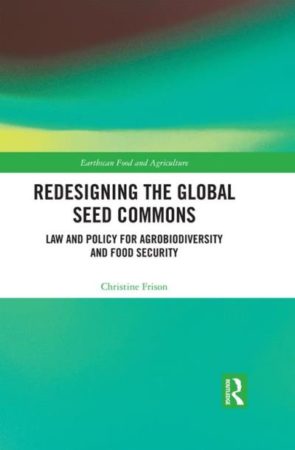- Nordics upgrade genebank database.
- Crowdsourcing Wollemi pine conservation.
- Corals need a genebank too. And a database and crowdsourcing as well, no doubt.
- Though I’m not sure they’ll be able to make the food security argument.
- Or bring chefs on board.
- What would a community genebank look like for coral, I wonder. And are they hiring?
Nibbles: Mexico CC, Europe CC, Andean CC, CSA, Seeds, GIAHS, China genebank, Maize domestication, Coffee history, Conservation book
- Interactive website on bioclimatic corridors in Mexico. Bits don’t work, though.
- Interactive website on climate analogues for Europe.
- How Andean farmers are coping with the kind of changes mapped above.
- Oh dear, climate smart agriculture is a myth anyway.
- But saving seeds isn’t, thankfully.
- Still not enough linkage with the GIAHS, though, but maybe this course will fix that.
- Maybe start with peafowl? China shows us how.
- How maize became a staple: quite early, and quite quickly, basically.
- Not much coffee in early English coffeehouses. Amsterdam’s coffeeshops unavailable for comment.
- Open-access magnum opus: Conservation Research, Policy and Practice.
Brainfood: Stress, Peasants’ rights, Maize domestication, Plant diversity, Teff evaluation, Red clover diversity, WTP, AnGR cryo, Sheep history, Population & biodiversity, Planet proofing, Cassava map
- Rapid detection of stressed agricultural environments in Africa under climatic change 2000–2050 using agricultural resource indices and a hotspot mapping approach. Even some coldspots will turn hot.
- The UN Declaration on Peasants’ Rights (UNDROP): Is Article 19 on seed rights adequately balancing intellectual property rights and the right to food? What do you think?
- The genetic architecture of the maize progenitor, teosinte, and how it was altered during maize domestication. Domestication worked on lots and lots of really small-effect QTLs.
- Areas of plant diversity — What do we know? Quite a lot, actually.
- Current and projected eco-geographic adaptation and phenotypic diversity of Ethiopian teff (Eragrostis teff) across its cultivation range. Genebank collection thoroughly evaluated. Genebank unavailable for comment.
- Population structure and genetic diversity in red clover (Trifolium pratense L.) germplasm. Genotyping shows 4 geographic groups, with some linked phenotypic differences.
- ‘Warehouse’ or research centre? Analyzing public preferences for conservation, pre-breeding and characterization activities at the Czech genebank. Research centre, but only up to a point.
- Pollen Cryopreservation for Plant Breeding and Genetic Resources Conservation. Gotta wonder what the public preference for conserving pollen might be.
- The recent state of cryopreservation techniques for ex-situ gene conservation and breeding purposes in small ruminants: A review. Oocytes and embryos need more work than pollen.
- Archaeogenetic analysis of Neolithic sheep from Anatolia suggests a complex demographic history since domestication. Domestication bottleneck, followed by diversity increase due to admixture. Too late to cryo, alas.
- A systematic review of biodiversity and demographic change: A misinterpreted relationship? High human population numbers are usually bad for biodiversity, but not everywhere and not always.
- A re-boot of tropical agriculture benefits food production, rural economies, health, social justice and the environment. Plant cool species on degraded farmland. Especially where human population density is high?
- CassavaMap, a fine-resolution disaggregation of cassava production and harvested area in Africa in 2014. Always good to have the next crop production map.
Free the seed
Free for the next week!!!!

Brainfood: CC & breeding, Maize data, Images, Seed activism, Fishy rice, BRI, Cherry genome, Llama diversity, Swiss chestnuts, Integrated livestock, Aichi targets, Forests, Rejolladas, Bitter gourd genome
- Designing crops for adaptation to the drought and high‐temperature risks anticipated in future climates. High-temperature tolerance of seed-setting and transpiration efficiency are going to be needed.
- 2019 release of SNP allele frequency data for maize accessions in the CIMMYT Germplasm Bank maize collection. Maybe this will help?
- ImageBreed: Open‐access plant breeding web–database for image‐based phenotyping. I’m sure this will help.
- In or out? Organisational dynamics within European ‘peasant seed’ movements facing opening-up institutions and policies. In, I hope.
- Rice field fisheries: Wild aquatic species diversity, food provision services and contribution to inland fisheries. Careful with intensification.
- A draft genome of sweet cherry (Prunus avium L.) reveals genome‐wide and local effects of domestication. Interesting parallels with peach.
- Genetic Diversity and Population Structure of Llamas (Lama glama) from the Camelid Germplasm Bank—Quimsachata. The populations of 2 breeds in the bank are diverse but not very different.
- Reservoir of the European chestnut diversity in Switzerland. There’s a uniquely Swiss genetic group.
- Commercial integrated crop-livestock systems achieve comparable crop yields to specialized production systems: A meta-analysis. Aim for soils of intermediate texture for the win-win though.
- Best-practice biodiversity safeguards for Belt and Road Initiative’s financiers. Needs work.
- Assessment of national-level progress towards elements of the Aichi Biodiversity Targets. Not great. See above.
- Meeting the food security challenge for nine billion people in 2050: What impact on forests? Impact need not be as great as it could be. See above.
- Influential landscapes: Temporal trends in the agricultural use of rejolladas at Tahcabo, Yucatán, Mexico. Solution sinkholes have been used for horticulture for hundreds of years.
- Long-read bitter gourd (Momordica charantia) genome and the genomic architecture of nonclassic domestication. Almost as much phenotypic differences between two regional genotypic groups among cultivated forms than between the wild and cultivated. More here.